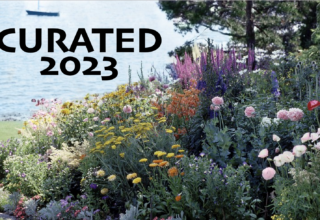
Don’t take anything at face value. Don’t write anything simply because the highest ranking person in the room is the one making the statement. You know you are being a good guide when you see people begin to help one another make the idea “good enough” to go up on the flip chart.
That’s when the power of collective native intelligence starts kicking in. The best way to keep “upping” the energy and increasing both the amount and the degree of collegial participation in this, and subsequent exercises, is to invite everyone to “think out loud.” What’s that?
Thinking out loud is basically listening to yourself even as you express an idea; listen to each word as it connects to the next word, and the next, until you get to the end of what you are saying. The human mind is capable of reprogramming itself every microsecond.
We do this all the time. We reprogram our thinking, and what we say next, based on what we perceived in the previous microsecond. So, if you’re really paying attention to what you are saying as you say it, you have plenty of opportunity to refine it before you have finished saying it.
That’s the filter through which every idea proposed for the Significant Seven should pass. Repeat the same statement several times, out loud, and you will likely begin to see how the words should fit together rather than how they were put together in the first place
Thinking out loud (sometimes mistaken for the babbling of the insane) is one of the hallmarks of geniuses at work. It is the externalization of the evaluation, refinement, restatement, re-evaluation, etc., etc., etc. – in real time – that’s going on in their brain. That’s where you want to get to. Keep going until you have seven significant facts up on the board. Neither more nor fewer. If someone insists there’s an 8th fact to consider, that’s where the FUN begins.
The Guide: OK, we’ve got seven significant facts on the board right now. We said there can’t be an 8th, yet now we’ve got one. For that to go up on the board, something has to come down. What has to come off the board to make room for this new idea?
Can we combine some things on the board to make room? Is this new idea a subset of anything already on the board? Are there ideas that are really subsets of ideas already up on the board? What do you all think?
When the Seven Significant Facts are all that is up on the flipchart… ask one more time if everybody’s happy with where we’ve gotten to. If the consensus is “yes” then put the flipchart up on the wall where it can be seen.
The Significant Seven should be the first (going left to right) of all the 7-3-1-3-7 flipcharts that will get completed in the course of the session and put up on the wall. Next, it’s time to turn facts in propositions. Seven facts are great fuel for thinking and seven is a great information foundation; but it is too much for making sense of information. That’s where the propositions come in.
Download Article 1K Club
















